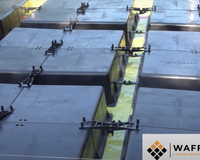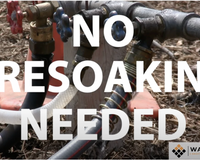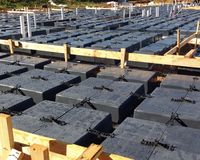
Many homeowners are faced with massive repair costs and frustration from damage to the foundation on their homes. In addition to trying to figure out the correct way to fix the damage, many wonder, what caused it in the first place? One of the most common causes of foundation problems is when the earth around them shifts or becomes unstable. There are many reasons that may cause your soil to shift, expand or change texture. I will discuss 4 causes of foundation movement, to attempt to shed some light on this subject.
Heat and Cold
In warmer, more rainy climates, the concrete in your foundation may absorb moisture and swell, and in turn contract as it loses moisture and dries out. In colder, snowy climates the opposite of this happens, where the concrete freezes and thaws, with similar results also causing foundation shifting. Water is one of nature’s most dynamic forces and hot or cold, it causes foundation movement. One of the warning signs of foundation damage is settling cracks and soil pulling away from the foundation.

Changes in the Soil
Many builders treat the concrete used in foundations to be water resistant, but what happens when the water begins to effect the soil around the foundation? Softer soil over time can lead to your house sinking. In southern climates with clay soil, high summer temperatures can dry the land out causing it to sink and the foundation to settle. In other parts of the south, extremely wet, swampy land can move a house off its foundation. One traditional solution to this problem is going through the hassle and spending resources to compact the soil before laying your monolithic slab. A better solution to prevent shifting and changes in density, is to use a foundation solution designed to accommodate for shifting soils.Tree Roots
Tree roots over time are also causes for the ground to move around your foundation. Wrigley Field in Chicago is famous for the ivy growing along its brick walls. But imagine the same forces unchecked against your home’s basement walls. Large tree roots under, or pressing against your foundation can cause foundation sinking. If possible try to avoid trees with invasive roots that damage foundations. Trees with taproots have been found to have less invasive roots than other trees.
Running Water
Plumbing leaks take time to be noticed and sometimes require a reading at the meter to realize they are there. Leaking pipes can look like a small drip to the eye, but in a very short amount of time they can wear through your foundation. Faulty sewer lines can leak water that causes foundation damage also. Sometimes monolithic slabs are not installed with proper drainage which makes them extremely vulnerable to foundation settlement.Be sure to choose a monolithic slab foundation system that allows builders to easily install drainage solutions
Knowing ground settlement causes and that water can cause foundation problems is important in avoiding repairs to your home’s foundation. It's better to find a good general contractor who understands differential settlement, than have to rely on repair experts to perform costly foundation repair on your home after your house settles in 20 years.
Using a ribbed monolithic mat slab, designed to be able to withstand different types of foundation movement is the best way to prevent a settling foundation from damaging your home or commercial build.
When considering a ribbed monolithic slab for your next build project, choose a foundation that uses void forms to accommodate for expansive soils. The Wafflemat foundation system is a revolutionary foundation design that has already saved thousands of building projects from foundation issues.
With 30 million square feet of foundation installation experience, Wafflemat experts are your source for foundation expertise in the future. Contact a Wafflemat foundation expert today for a free consultation for your next build project.





